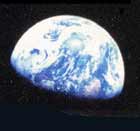|
Vertical farming
To grow their food, humans have now taken over a huge fraction
of the planet's land surface: around 7 million square miles, the
size of South America. There will be about 2,500,000,000 more people
by 2050, so more land, the size of Brazil, will be needed to feed
them, but that amount of farmable land does not exist.
Instead, food can be grown on a vastly
smaller area, within cities: in greenhouses or on rooftops or in
buildings that can be several or many levels high. These vertical
farms can make use of the many waste lots that now exist within
cities. They can be close to the densest and poorest communities
that need them most. Distribution can be at the door, instead of
by long haul from distant farms. Plants can be grown hydroponically
(in water), round the clock and round the calendar. Food would be
much cheaper. There would be huge savings of the fossil fuels now
used for farming machinery and for transportation, of water, of
fertilizers, of pesticides, of erosion of topsoil and runoff of
silt. Such farming would not be at the mercy of extreme weather
and of the shifting of climatic zones. And, perhaps the most attractive
feature, much of the countryside now taken up by vast areas of monoculture
can revert to nature — to the landscape as it used to be.
The drop in use of fossil fuels, and,
even more, the restoration of the natural carbon cycles of the plant
world, could be enough to halt the rise in carbon dioxide emission.
Vertical farming is already being
tried. See this better
description.
return
|

